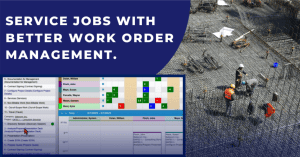KRIS OLDLAND – FIELD SERVICE NEWS – MARCH 2021
In the third part of our analysis of the Field Service News Research project exploring the core Key Performance Indicators (KPIs) used by field service organizations today, we find that while the landscape appears to be evolving rapidly, the fundamental aspects of measuring field service excellence remain consistent. Many organizations now track metrics such as response time and time spent on each assignment to gain real-time insights into performance.
A Complex, Yet Familiar Set of Field Service Metrics
Speaking with respondents and reviewing the raw data from the online survey, we observed a trend toward increasing the total number of KPIs being measured. Follow-up interviews confirm this shift to a more complex set of KPIs, reflecting the need to measure success in a servitized and digitized environment. This is especially true when tracking factors such as repair Mean Time to Repair (MTTR), average response time and customer satisfaction score.
However, stepping back and analyzing the data with a simplified model reveals that the KPIs identified by respondents as critical to service operations still fit within three traditional areas of operational management. These categories, which support efforts to improve service quality and operational efficiency, are essential for any field service team aiming to drive customer retention.
These categories are:
- Task Completion
- Productivity
- Customer Satisfaction
Within each category, one of the three most widely cited critical KPIs can be found, each particularly useful for assessing service performance:
- First-time-fix (cited by 75% of respondents)
- Tech Utilization (cited by 78% of respondents)
- Net Promoter Score (NPS) or alternative Customer Satisfaction (CSAT) metric (cited by 91% of respondents)

While over half (51%) of field service companies in our response set have changed the number of KPIs they measure, and the introduction of digitalization and servitization has driven many of these changes, the fundamental areas of field service operations being measured remain the same. These often include details on how the field service team manages average time on service calls and how service technicians perform in real time using advanced service management software.
As one respondent noted, “For us, there are perhaps three or four key areas that we monitor in terms of field service operations and these remain constant regardless of the introduction of new approaches to operations or the introduction of new technologies such as IoT which we are now using substantially.” “However, underneath each of these main areas of focus are several other KPIs that we measure and it is within these subsets of KPIs where we are seeing where we need to make changes to what metrics we are tracking.” This includes metrics around contract attach rate and inventory management, both of which can ultimately boost customer retention.
As we began the second phase of the research project and conducted further interviews, many of the emerging trends became increasingly apparent. One respondent, whose business was running a feasibility analysis on offering outcome-based solutions, summarized the challenge:

“For us, the challenge is in what financial KPIs we should be putting forward as we have no existing data to base these on.”
“Our board is entirely behind a move towards such an offering. Still, the stumbling point so far for us with KPIs has been in what we should consider as successful in terms of revenue and of course at the end of the day for any business the ultimate KPI is the profit margin.”
“However, without previous numbers to benchmark against, and as the revenue streams are so different to our existing models, we decided that the best option in the initial phase of the project would be to measure the cost reduction of us moving from reactive to proactive service – so Technician Utilization, Travel Time and First-Time-Fix, which have always been important to us anyway, now become not only indicators of performance but also tools to validate the move to outcome-based services.”
“The intention is then to review and re-evaluate these metrics quarterly as the model matures within our business across the next three years.”
This is a common challenge for field service companies seeking to embrace servitization. As demonstrated here, it is often the approach and reasoning behind KPI selection that must evolve, not necessarily the metrics themselves. Tracking field service activities in real time and monitoring repair MTTR can provide more precise data to improve the customer experience. Implementing a service management solution can reduce repeat visits and strengthen customer retention, while also enhancing the attach rate for future upgrades or contracts.




